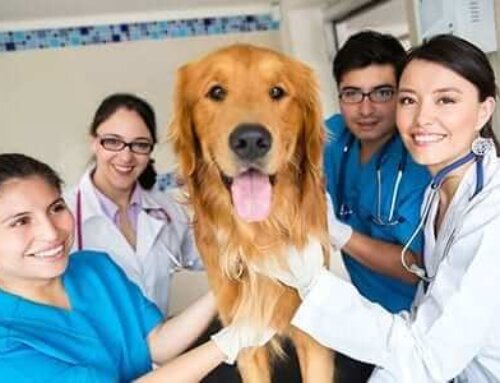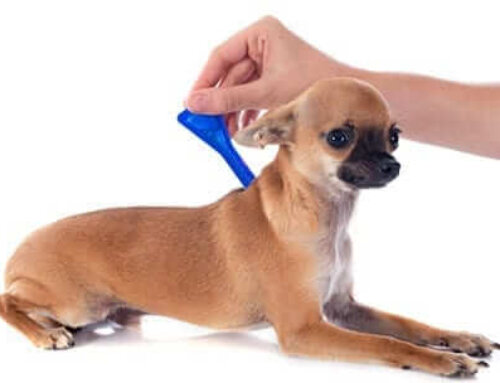Every now and then one of our customers asks me about testing urine glucose instead of blood glucose testing. There is a time and place for testing urine in the home, but in general blood glucose testing provides us with much better information for insulin dosing adjustments. Afterall, checking a blood glucose tells us what the pet’s glucose level is right at that moment. Urine glucose testing only gives us a general idea of what the pet’s blood glucose may have been doing over the last few hours since the pet last urinated. Today I’ll discuss how to obtain a urine sample.
As I say in my veterinary clinic, “Never let a urine sample go to waste”. A urinalysis is a poor man’s chemistry profile! If a pet goes potty in my clinic my nurses know I will likely suck it up off the exam table or floor with a syringe and run a dipstick and check the specific gravity (concentration). Even if a pet seems perfectly healthy, we can glean good information from a pee sample. Even if it is a baseline sample for a healthy pet, we may later use that information if a pet becomes ill down the road. I would be unlikely to have a client do this on a regular basis but now and then we should run a urinalysis. A pet owner won’t be able to do the microscopic portion of a urinalysis, but powerful information is available on a urine dipstick.
How do we get a pee sample at home? For dogs that’s usually pretty easy. The trick with dogs is to wait until the stream of urine has begun. Just think of when you are indisposed and you get a phone call or the doorbell rings. You quickly try to stop relieving yourself, but it takes a second or two. The same thing goes for pets! The biggest hint I can give pet owners who have the mission of catching urine is to wait until the pet has started to urinate before sticking the cup into the stream. If they keep sticking the cup under the pet before the pet starts to potty, I’m certain the pet just thinks the human has lost his marbles or is just a complete weirdo. Another big help is to have the dog on a leash so that you aren’t ten feet away when Fluffy pops a squat or lifts a leg.
Now, what about putty tats? Cats can be more difficult for obtaining urine, whether in the clinic or at home. Many cats are very private about their litter box habits. This really makes no sense to me. I didn’t have cats until I graduated vet school twenty some years ago. I haven’t gone potty alone since. For some reason when I shower or use the facilities my cats feel the need to come say hello. And yet, most cats prefer privacy when they are in the litter box.
So how does one get a feline urine sample? If your kitty is not shy about going in front of you, just catch it. Before you laugh, know that I’ve had clients bring me urine in cups and even plastic bags that was obtained this way. I myself once caught a pee sample on one of my cats (for routine annual senior testing) by following her into the litter box with a Dixie cup. It can be done. Sometimes. At the vet clinic we are more likely to get urine from a cat by “cystocentesis”. This means sticking a needle right in the bladder. For most of my career I did this by feeling for the cat’s bladder with my left hand while inserting a needle into the urinary bladder with my right hand. These days I most typically do cystocentesis guided with my ultrasound. This way as I’m getting my urine sample I can also peek for stones or abnormalities such as a thickened bladder wall. Modern technology rocks!
Obviously you won’t be able to do cystocentesis at home. So if we need a client to bring in urine for a kitty, clever folks have come up with ways to trick a cat! One of these is nonabsorbent kitty litter. Yep, you put a cup of these clean plastic pellets into an otherwise empty and clean pan or tray. Obviously you will need to deny access to your cat’s “real” litter box. Just as we humans prefer to avoid a porta-potty, any self-respecting cat doesn’t want to pee in plastic litter in a different “box”. Nonetheless, it often works. I have a gallon jug of nonabsorbent cat litter in my clinic should a client want to try this technique.
Now, let’s have an ‘A-Ha’ moment regarding letting pets potty before vet appointments. I can’t tell you the times that pet owners come into the clinic for a suspected urinary tract infection and have just taken their dog out to potty before the exam. It is my pet peeve of pet pee! Sometimes pet owners are so worried about not letting the pet go potty in the vet clinic that they forget we need a urine sample to make a diagnosis. It’s fine to catch a fresh urine sample just before an exam so long as we have urine. And for kitties, you might wish to deny access to the cat box for 2 or 3 hours before swooping up and stuffing Fluffy into the cat carrier. If I need a urine sample but the pet’s bladder is empty I may have to keep the pet in the clinic for a few hours until the pet has formed more urine.
That’s it for collecting urine from our critters. Next week we will discuss just what you can test on your pet’s urine at home.
NOTE: Consult your veterinarian first to make sure my recommendations fit your pets special health needs.










Leave A Comment